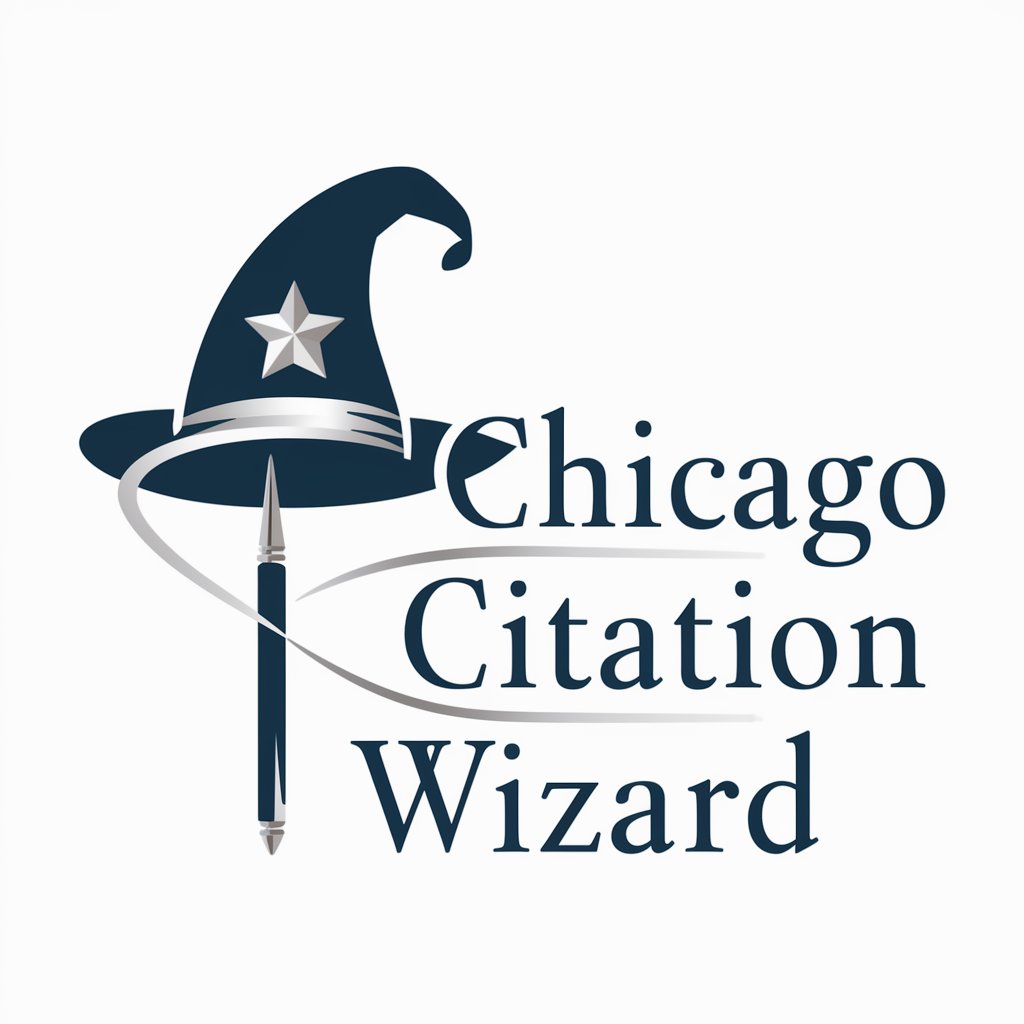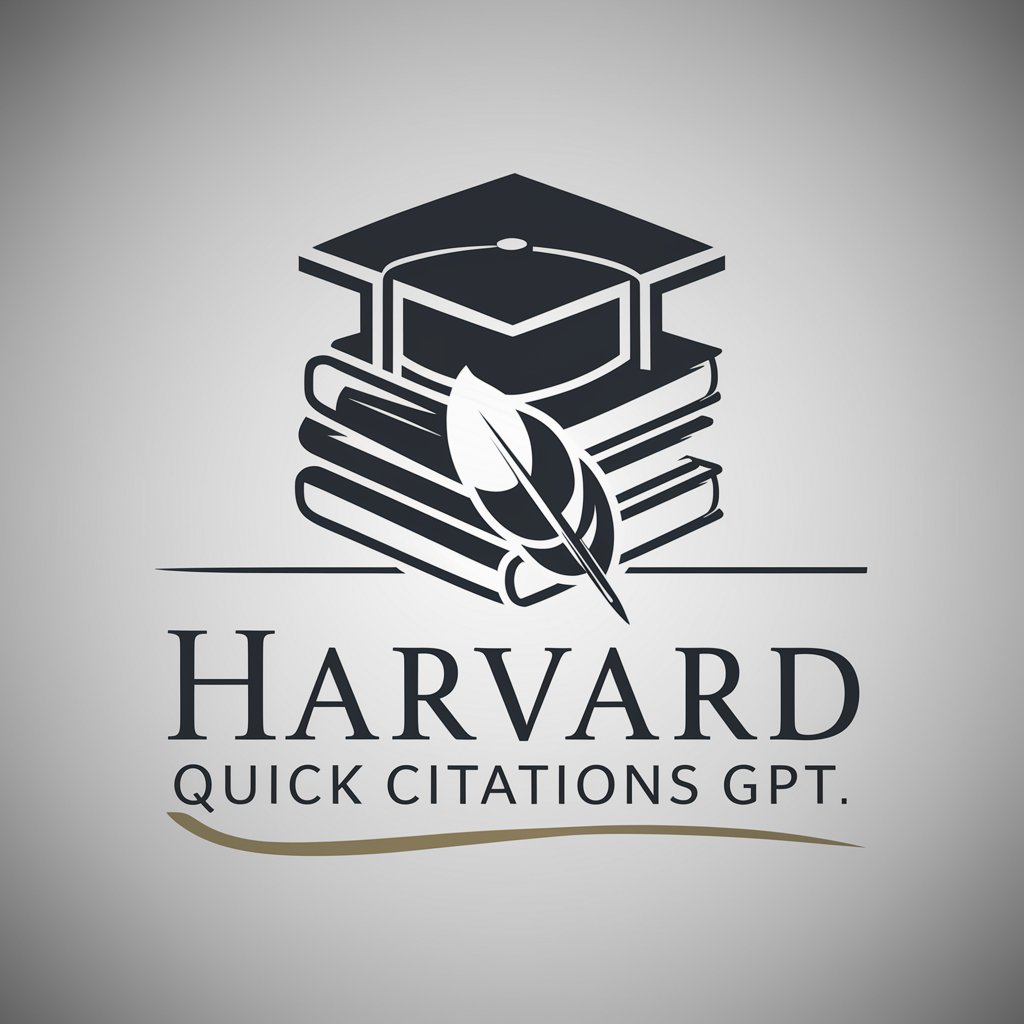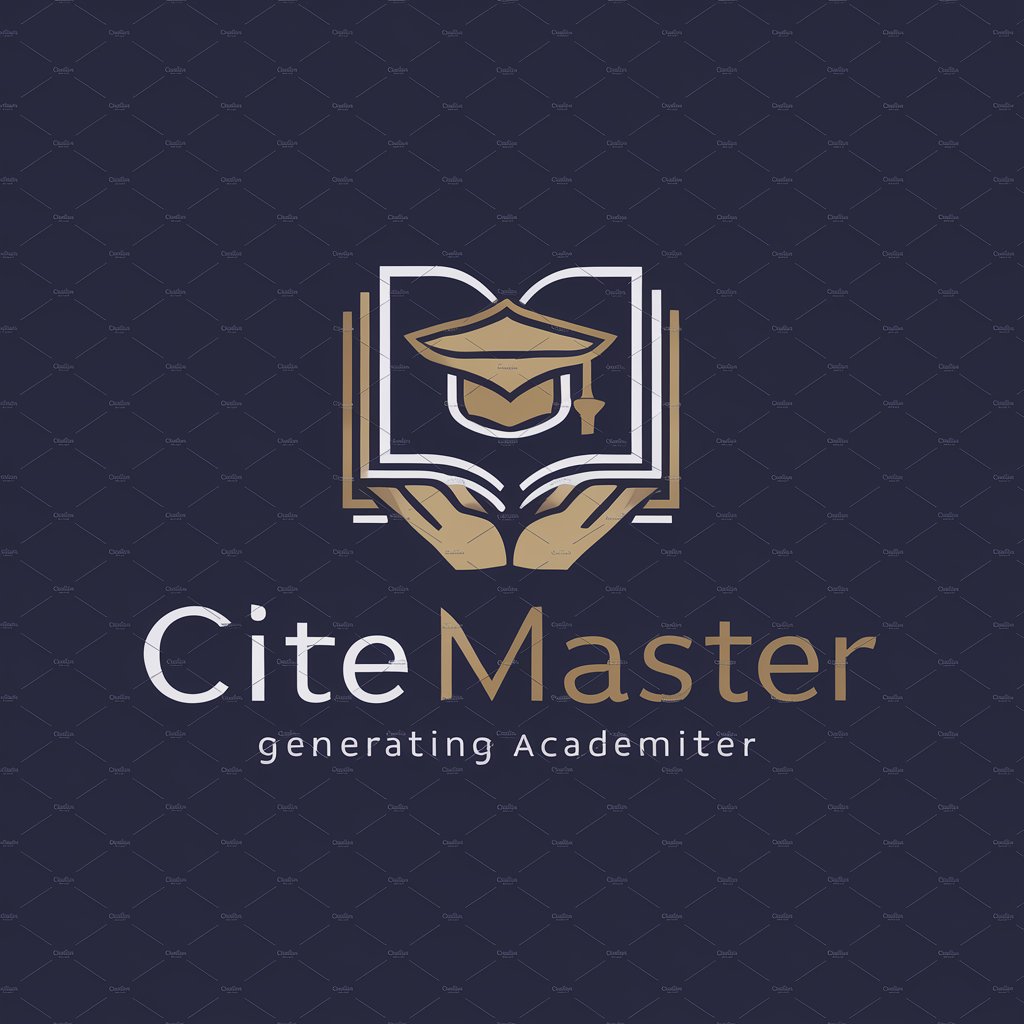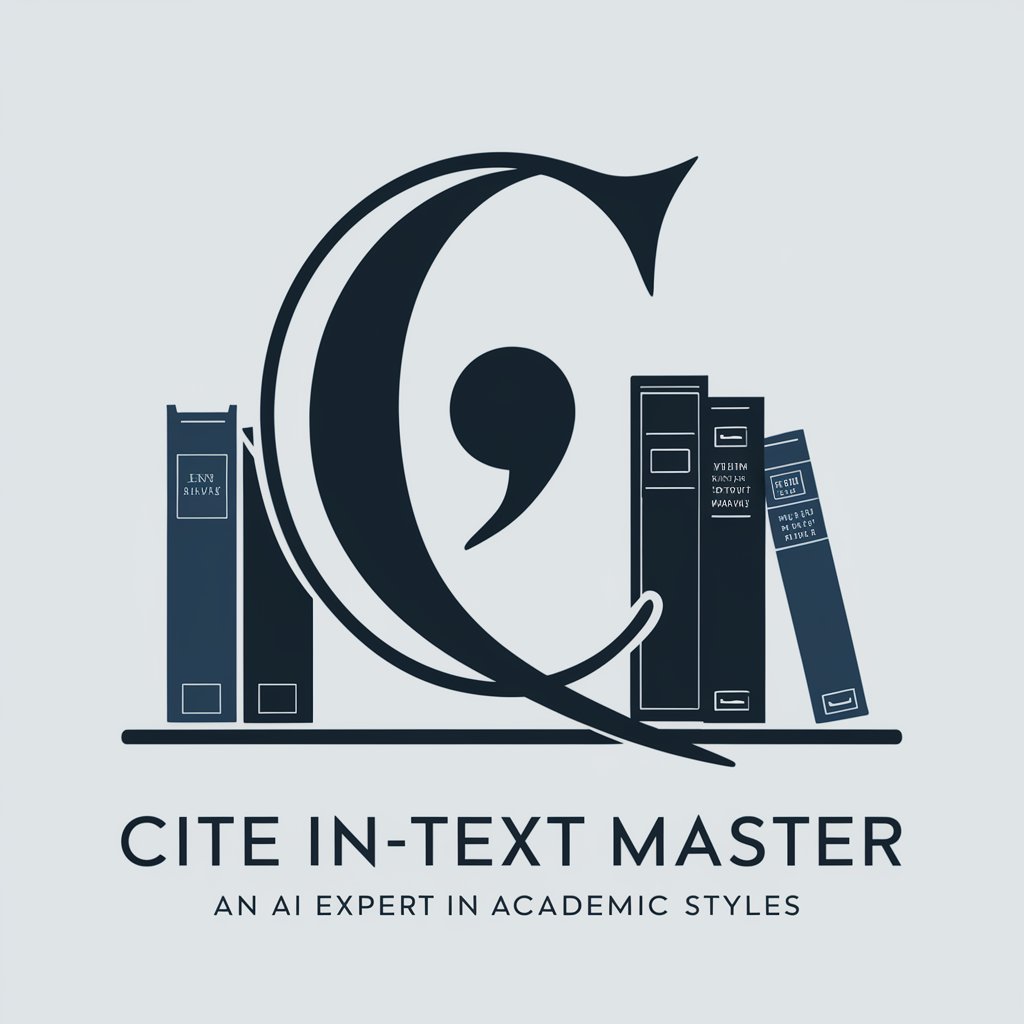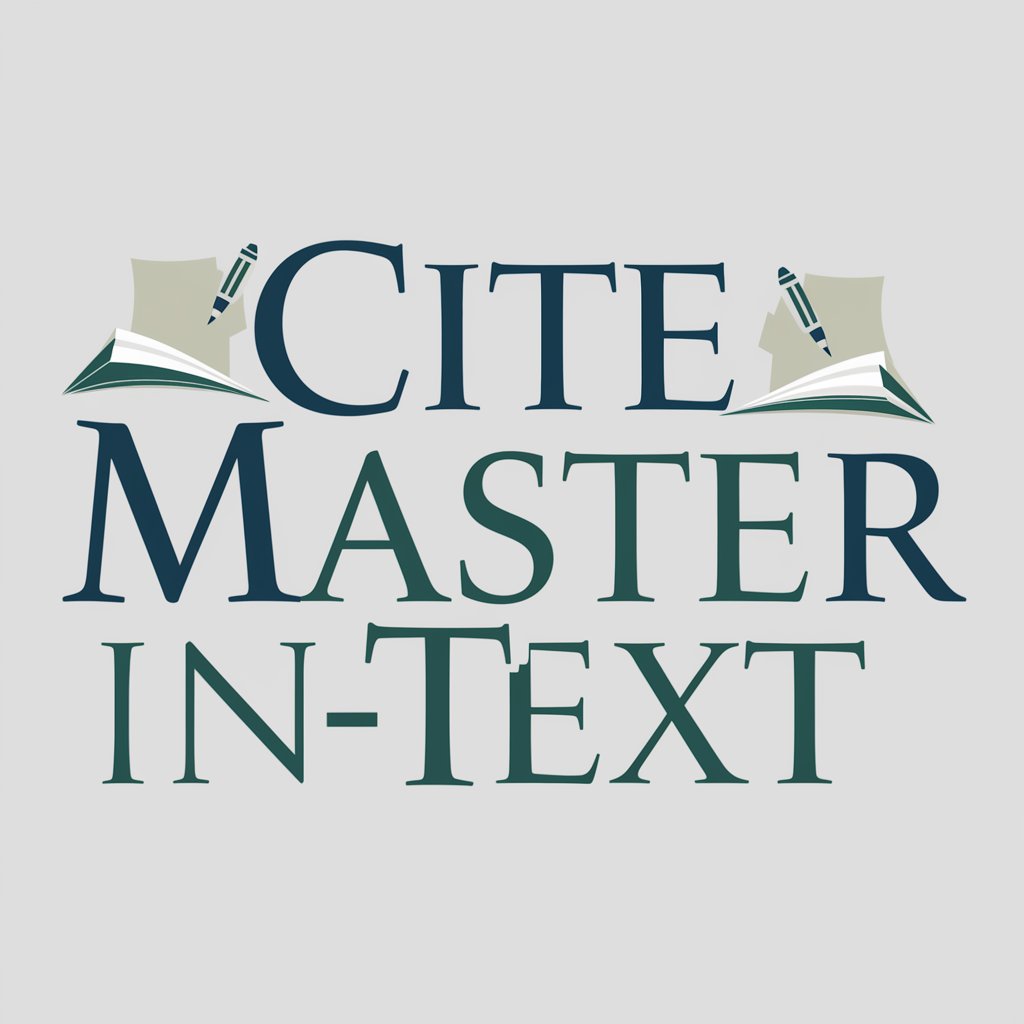
Cite Them Right Harvard Style - referencing style guidelines
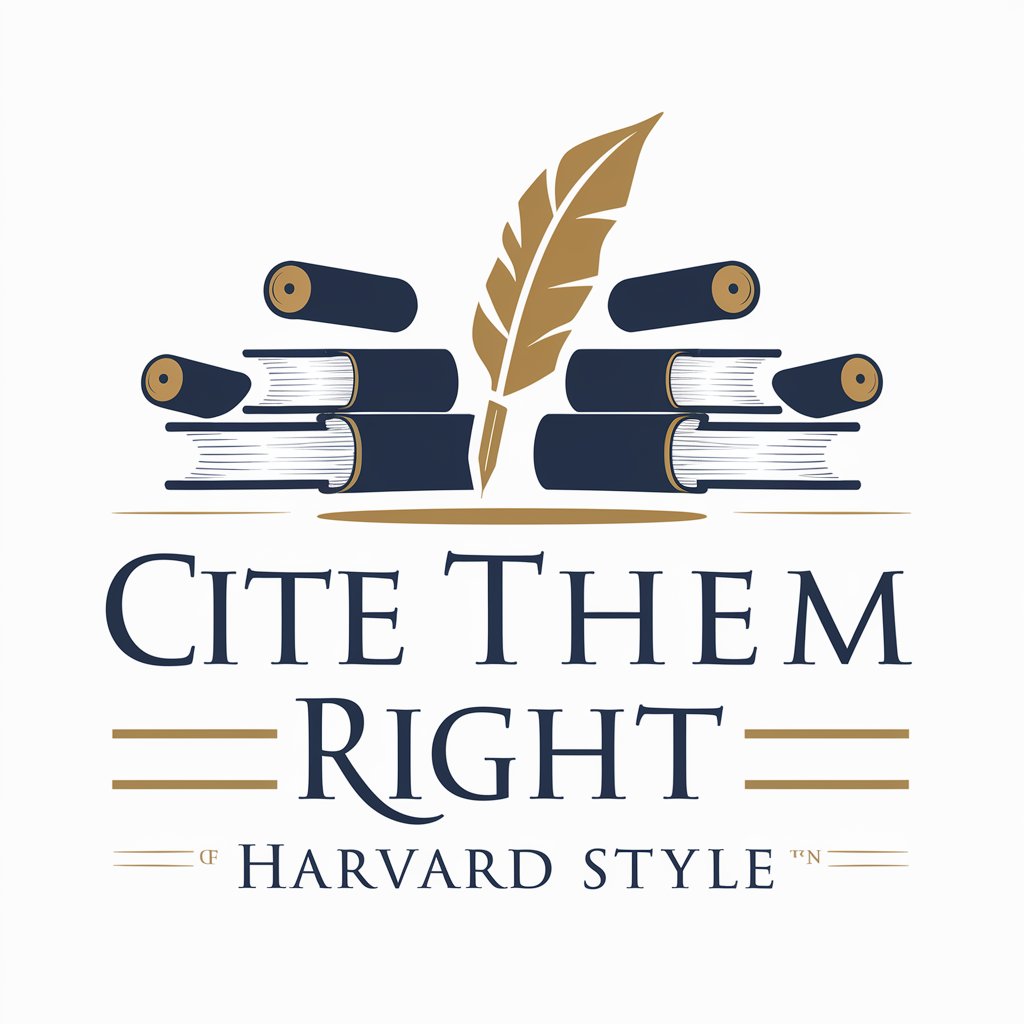
Welcome to Cite Them Right Harvard Style!
AI-powered Harvard citation assistant
How do I reference a book in Harvard style?
Can you show me how to cite a journal article?
What is the format for referencing an edited book chapter?
How do I reference an online report using Harvard style?
Get Embed Code
Introduction to Cite Them Right Harvard Style
Cite Them Right Harvard Style is a referencing guide that originates from the broader Harvard style as adapted by the 'Cite Them Right' platform. Its primary purpose is to ensure accurate and consistent citations and references in academic writing, using an author-date format for in-text citations and comprehensive bibliographic entries. The guide emphasizes ease of use and applicability across a wide range of information sources, providing structured guidelines for diverse reference types. Examples include: 1. In-Text Citation: 'Recent research shows (Jones and Henry 2011, p. 1150)...' or '...Evans explains this clearly in his recent research (2015, p. 33)...' 2. Reference List Entry for a Book: 'Grix, J. and Watkins, G. (2010) *Information skills: finding and using the right resources*. Basingstoke: Palgrave Macmillan.' 3. Reference List Entry for a Journal Article: 'Borden, S. L. and Tew, C. (2007) 'The role of journalist and the performance of journalism: ethical lessons from "fake" news (seriously)'. *Journal of Mass Media Ethics*, 22(4), pp. 300–314.' The guide aims to cater to a broad audience of students, researchers, and professionals needing precise guidance in citation and referencing. Powered by ChatGPT-4o。

Main Functions of Cite Them Right Harvard Style
Author-Date Citation System
Example
Recent research shows (Jones and Henry 2011, p. 1150)... or ...Evans explains this clearly in his recent research (2015, p. 33)...
Scenario
Ensures consistent citation across a range of disciplines, particularly useful in social sciences, humanities, and business studies.
Comprehensive Reference List Guidelines
Example
Grix, J. and Watkins, G. (2010) *Information skills: finding and using the right resources*. Basingstoke: Palgrave Macmillan.
Scenario
Helps compile a reference list that includes full bibliographic details of all cited sources, enabling readers to locate original materials efficiently.
Support for a Wide Range of Sources
Example
["Book: 'Grix, J. and Watkins, G. (2010) *Information skills: finding and using the right resources*. Basingstoke: Palgrave Macmillan.'","Journal Article: 'Borden, S. L. and Tew, C. (2007) 'The role of journalist and the performance of journalism: ethical lessons from \"fake\" news (seriously)'. *Journal of Mass Media Ethics*, 22(4), pp. 300–314.'","Webpage with Individual Author: 'Wild, S. (2021) *Can blue light glasses reduce digital eye strain?*. Available at: https://www.bupa.co.uk/newsroom/ourviews/digital-eye-strain-glasses (Accessed: 9 April 2021).'"]
Scenario
Offers detailed referencing rules for books, journals, web pages, and unconventional sources like social media posts and conference papers.
Guidance for Secondary Referencing
Example
Smith (2018 quoted in Jones 2020, p. 21) states clearly that...
Scenario
Helps users handle situations where they rely on quotes or paraphrases from secondary sources they cannot directly access.
Disambiguation of Multiple Works by the Same Author in the Same Year
Example
Smith, L. (2001a) 'Another life to live for Dorothy....', Smith, L. (2001b) 'Bye bye yellow brick road...', Smith, L. (2001c) 'Who said life would be easy for Toto...'
Scenario
Ensures readers can distinguish between works by the same author published in the same year by adding lowercase letters ('a', 'b', etc.) after the publication year.
Ideal Users of Cite Them Right Harvard Style
Students
Undergraduate and postgraduate students seeking to ensure their academic work adheres to strict referencing standards. They benefit by avoiding plagiarism and gaining confidence in citing diverse sources.
Researchers and Academics
Researchers, academics, and authors writing for journals or academic publications. They benefit from the comprehensive guidelines for various source types and secondary referencing.
Educators and Librarians
Educators and librarians who provide guidance on referencing practices. They can use the guide to instruct students and researchers on best practices.
Professionals
Professionals in various fields needing accurate citations for reports, articles, or presentations. They benefit by ensuring their work is properly referenced and maintains professional credibility.

How to Use Cite Them Right Harvard Style
Step 1
Visit yeschat.ai for a free trial without login, also no need for ChatGPT Plus.
Step 2
Consult your school’s referencing guide for specific requirements and use Cite Them Right alongside it for additional guidance.
Step 3
Familiarize yourself with the key citation rules, especially the author-date format used in-text and the alphabetical arrangement of sources in the reference list.
Step 4
Refer to examples provided in the guide or Cite Them Right Online to understand how to structure citations and references for different sources.
Step 5
Ensure consistency in formatting across your work, and always double-check your references against the Cite Them Right Harvard style rules.
Try other advanced and practical GPTs
Webマーケティング(ツンデレ)クイズ
Learn Marketing with Attitude!

Vuelos
AI-powered smart flight finder

のGitHub
Empower collaboration with AI-driven GitHub tools.

Tara
Engage, Laugh, and Reflect

ニュース予測くんNeo
AI-powered insights for strategic forecasting.

Fantasy Creature Creator
Craft Creatures, Unleash Creativity

PyGame Mentor
Elevate your game with AI-powered coding insights.

Dragonfly
Empowering Creativity with AI

Kotlin
Revolutionize Development with AI-Powered Kotlin

付强三段式
Transform Text with AI Precision

제로 안드로이드
Elevate Android development with AI-powered insights

物語メーカー【睡眠導入バージョン】
Dream stories, peaceful sleep.

Frequently Asked Questions
How do I cite and reference a source quoted in another author's work?
This is called secondary referencing. If you cannot find the primary source, cite the secondary source in the reference list and mention the primary source in your in-text citation (e.g., Smith 2018 quoted in Jones 2020, p. 21). If both sources are available, list them separately in the reference list.
How many authors do I include in the citation and reference list?
Include up to three authors in the in-text citation (e.g., Hill, Smith, and Jones 1997). For four or more authors, use 'et al.' in the citation (e.g., Harrison et al. 2003). In the reference list, list all authors unless there are more than 10.
How do I cite and reference sources from the same author and date?
Alphabetize your reference list and differentiate each source with a lowercase letter (e.g., Smith 2001a, Smith 2001b). This distinction should be reflected in your in-text citations (e.g., Smith 2001b, p. 20).
What's the correct format for citing an online report?
Use the author's or organization’s name, year of publication, title of the report, and URL with access date. Include a reference number if available (e.g., Ofcom 2021, Understanding online false information in the UK, Available at: [URL], Accessed: 3 August 2021).
How do I cite a chapter from an edited book?
List the chapter’s author, year of publication, chapter title, book editor(s), book title, and publisher information (e.g., Isenhour C. 2015, 'Sustainable consumption and its discontents' in H. Kopnina and E. Shoreman-Ouimet (eds.) Sustainability: key issues, Abingdon Oxon: Routledge, pp. 133-154).

